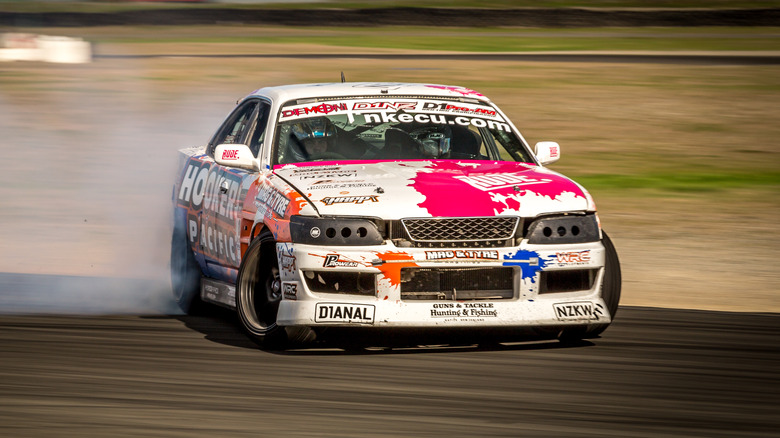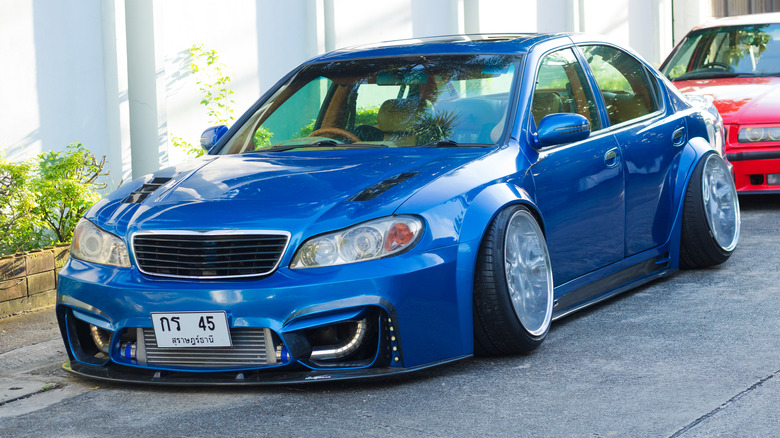Why Do Some Cars Have Tilted Wheels?
All styles of car modification have their fans and critics, but few styles are as divisive as the slammed or stanced car. With their wheels tilted out at an angle and their bodies only barely above the ground, stanced cars are highly distinctive, and are notorious for being impractical to drive on the road. The style originated from Japan, where Bosozoku gangs with their bizarre cars competed against each other to see who would make the craziest looking car. Over the decades, that competition has evolved, and today's most extreme stanced cars are so low to the ground that even a speed bump or large pothole can present an insurmountable challenge.
Unlike some other car subcultures, there's no one type or era of car that gets most used as the base for a build. Stanced versions of JDM classics continue to be popular today, paying homage to the style's roots, but almost everything else from Italian supercars to family-hauling crossovers is also seen as fair game.
Builders of stanced cars aren't doing it for any practical reason — they simply like the look of the car after it's been lowered, as well as the community that exists around the subculture. But, there are some other types of cars and trucks that have their wheels tilted because of the benefits that tilt, or camber, can offer.
Why can negative camber be useful?
Negative camber sees the car's wheels tucked in closer towards the top of the wheel arch, and angled outwards at the point of contact with the road surface. Stanced car enthusiasts can use negative camber to fit wider wheels that wouldn't otherwise fit into their car's wheel arches, but there are several practical uses too. Drift cars — a motorsport that often goes hand-in-hand with the stanced look — use negative camber because it offers superior grip when the car is sideways. A few degrees of negative camber on a drift car's front wheels can help reduce understeer while drifting, as it keeps more of the tire in contact with the ground during the drift.
This comes at the expense of straight line performance, and will result in rapid tire wear on one side of the tire when the vehicle is driven normally. As such, a pro drift car would be unsuited to public roads, but many modern road-going sports cars use a less extreme degree of camber for the same reason. A small amount of negative camber won't impact straight-line driving performance, and it will make the car feel sharper in the corners.
The downsides of tilted wheels
Extreme negative camber like that seen on the most outlandish and probably illegal slammed cars are never beneficial, and are used for visual effect only. At those extreme levels, cars get through tires far quicker than normal, and because there's a smaller patch of tire in contact with the ground, their handling is compromised too. In some states, these kinds of modifications might even make a car illegal to drive on public roads.
However, some slammed cars feature air suspension rather than coil suspension, which allows the car's stance to be lowered when it's on show and then raised again for driving on the road. Hydraulic suspension has a similar function, although it's more commonly associated with lowriders.
Positive camber is also not beneficial for road cars, as it has the opposite effect of negative camber. While negative camber can improve cornering, positive camber makes the car more prone to losing control in a corner and potentially more vulnerable to rolling over. There have been cases where a car has accidentally been prone to positive camber while cornering, which Hagerty found was the case with the Tatra T87, and that car developed an infamous reputation for having a high accident and fatality rate among drivers.


